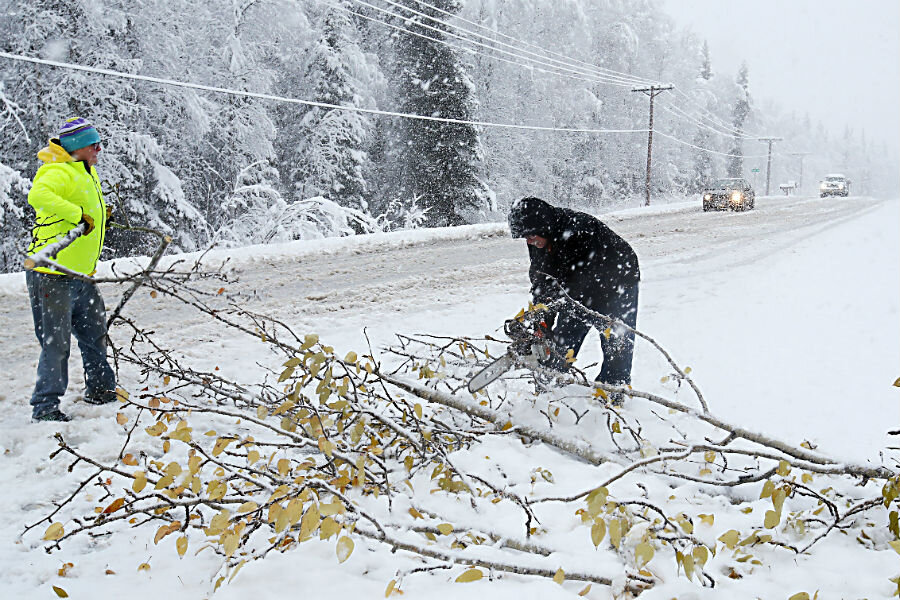Record exodus: Why people are leaving Alaska
Loading...
| Fairbanks, Alaska
More people left Alaska last year than they have in decades, with net migration out of the state at its highest point in the past quarter-century.
A report released Friday by the Alaska Department of Labor shows that about 7,500 more people moved out of the state than arrived in fiscal year 2014. The last time net departures were higher was in 1988, when 15,710 people left during an in-state recession, the Fairbanks Daily News-Miner reported.
The departures don't appear to be caused by the state's current financial problems because they came before oil prices dropped, Department of Labor economist Neal Fried said. "When those numbers were put together, we thought $100 oil was normal," Fried said, referring to the per-barrel price.
The departures were measured between July 2013 and July 2014.
The migration likely has more to do with improving employment opportunities in the Lower 48, Fried said. People historically come to Alaska when the rest of the U.S. is struggling with unemployment, he said.
In fact, for most of the last five years, it was easier to get a job in Alaska than in the lower 48. Now, the Alaska unemployment rate is 6.5 percent, above the national average. Now, the US employment rate is at low 5.1 percent.
But US employers added just 142,000 jobs in September, and the government sharply lowered its estimate of gains in July and August by a combined 59,000. Monthly job growth averaged a mediocre 167,000 in the July-September quarter, down from 231,000 in the April-June period, reported the Associated Press.
"That's a pattern that's probably repeated itself forever," Fried said. "Even prior to statehood, you probably saw that."
Alaska's population has always been transient, state demographer Eddie Hunsinger said. About 5 to 7 percent of the population moves to and from the state each year. The rate of out-migration was especially notable in Interior Alaska in 2014, which had 43 percent of the net departures in the state. About 3,200 more people left the region than arrived here last year, according to Alaska Department of Labor figures.
"There are economic pushers and pullers, for sure," Hunsinger said. "They certainly have an effect. But in any case, even if the economy is particularly bad in Alaska there will still be a lot of people moving to Alaska."
On a lighter note, Michelle blogs about 11 things she wished she'd known before moving to Alaska.
No. 5:
Don’t even think about enjoying the ambiance of a camp fire on a dark, summer night—it doesn’t exist. Instead you will be sitting around the camp fire with the sun shining bright at 10 p.m. Sorry, but that just does not have the same feel as a campfire under a dark, starry night. Yes, the sun does eventually set, but you won’t need a flash light to find the bathroom in the middle of the night because the sky is still dusky.







